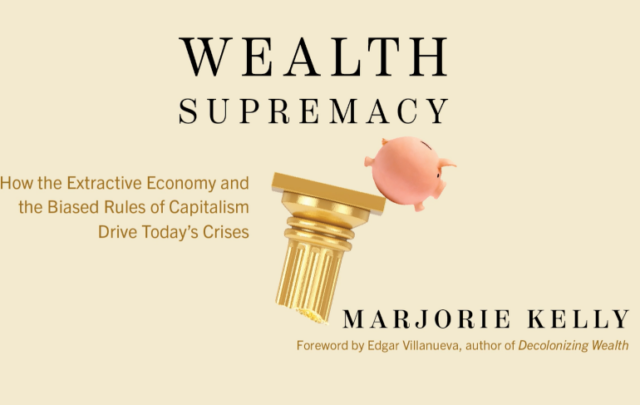Click on the headline (link) for the full text.
Many more articles are available through the Energy Bulletin homepage
Outpacing U.S., China now the world’s largest gorger of energy
Andy Hoffman, Globe and Mail
China has leaped ahead of the United States as the world’s largest energy consumer, marking yet another tectonic shift in the global economic order.
Already this year, China has sped past the United States as the largest auto market on the planet and moved ahead of Germany as the world’s No. 1 exporter. Now, driven by a seemingly endless series of major infrastructure projects as well as rising demand from its fast-growing consumer class, China’s energy consumption is outstripping the U.S., according to the International Energy Agency.
China last year consumed 2.252 billion tonnes of oil equivalent of energy from sources including coal, oil, natural gas, hyrdro and nuclear power, about 4 per cent more than the United States, the IEA said told the paper. The U.S. had held the title of the world’s biggest energy user since the early 1900s.
Ascendance to the top spot underscores the rising influence of the world’s fastest growing major economy and the reordering of international power following the global financial crisis. China’s oil-equivalent consumption, which includes crude oil, nuclear, coal, natural gas and hydropower, was just half the size of the U.S. 10 years ago…
(20 July 2010)
The Big Picture according to TAE: An updated primer guide
Stoneleigh, The automatic earth
As The Automatic Earth has grown and continued to catalogue the on-going financial crisis, it has been getting increasingly difficult for readers to find our view of the big picture in one place. Since it has been exactly one year since we issued our first primer guide, and several new primers have been added in the meantime, it seems an opportune moment to offer an updated distillation of our worldview.
The Resurgence of Risk, which appeared at The Oil Drum Canada in August 2007 provides the background to how we came to be in our present predicament. It is by far the longest of the primers, and its purpose is to explain in some depth the nature of our credit bubble, the role of ‘financial innovation’, the distinction between currency inflation and credit hyper-expansion and the mechanism by which value disappears as a bubble deflates.
For further explanation of the ponzi nature of bubbles, the spectrum of ponzi dynamics underlying many economic phenomena and the implications of this for where we are headed, see From the Top of the Great Pyramid.
This ties in with an earlier piece from The Oil Drum Canada, Entropy and Empire , detailing the progression of hegemonic power from empire to empire, as each rises, over-reaches, falls and passes the mantle on to its successor…
(22 July 2010)
Valuable links to recent TAE thinking. -KS
The Food Bubble: How Wall Street Starved Millions and Got Away With It
Amy Goodman, Democracy Now!via Information Clearing House
While Goldman Sachs agreed to pay $550 million to resolve a civil fraud lawsuit filed by the SEC, Goldman has not been held accountable for many of its other questionable investment practices. A new article in Harper’s Magazine examines the role Goldman played in the food crisis of 2008 when the ranks of the world’s hungry increased by 250 million. We speak to Harper’s contributing editor Frederick Kaufman.
TRANSCRIPT
MY GOODMAN: We continue with Goldman Sachs.
JUAN GONZALEZ: Well, while Goldman Sachs agreed Thursday to pay $550 million to resolve a civil fraud lawsuit filed by the SEC, Goldman has not been held accountable for many of its other questionable investment practices. A new article in Harper’s Magazine examines the role Goldman played in the food crisis of 2008, when the ranks of the world’s hungry increased by 250 million. The article is titled “The Food Bubble: How Wall Street Starved Millions and Got Away With It
AMY GOODMAN: The author of the article, Frederick Kaufman, joins us now. He’s a contributing editor at Harper’s Magazine.
Well, explain. We’re talking about Goldman Sachs today, this—they call it a landmark settlement, but they made more after-hours in trading last night than they will have to pay. So let’s look at Goldman Sachs and its record overall.
FREDERICK KAUFMAN: Yeah, this is really—it’s really outrageous. And on a certain level, this reform bill is really a sham, because it does not cover, in any way, shape or form, what Goldman Sachs—and really, let’s be honest here, it wasn’t just Goldman; it was Goldman, and it was Bear, and it was AIG, and it was Lehman, it was Deutsche, it was all across the board, JPMorgan Chase—what these banks were able to do in commodity markets, really which reached its peak from 2005 to 2008, in what is now known as the food bubble. And as Juan points out, this is unconscionable what happened, in the sense that their speculation and their restructuring of these commodity markets pushed 250 million new people into food insecurity and starving, and brought the world total up to over a billion people. This is the most abysmal total in the history of the world… (16 July 2010)
Interview: How Our Economy is Killing the Earth
Douglas Gorney, The Atlantic
When Bill McKibben first sounded the alarm about global warming 20 years ago, he was something of a voice crying in the wilderness. Now McKibben, author of The End of Nature and Deep Economy, is issuing an even more dire warning. His new book, with the science fiction-y title Eaarth, paints a picture of a depleted, overheated planet no longer suited to its inhabitants. That planet is our own, the time is now, and the book is non-fiction.
Laying the blame for climate change squarely at the feet of the growth economy, McKibben proposes a new, robust, “mature” economic model centered on localized energy, food production, and capital. McKibben, founder of the climate change action group 350.org, spoke to The Atlantic about the way our energy sources dictate our economy—and how we might yet live “lightly, carefully and gracefully” in a hotter and leaner world.
You must meet with considerable opposition from policymakers, academics, and press who are invested in economic growth.
Sure. It’s very hard for any of us to take on the notion that the thing that’s been central though the course of our whole lives, the political idea that whatever kind of ideology we’ve tended to embrace may no longer be serving us. It’s especially hard to take on because it’s an idea that, at some point, did serve us well. So yes, there’s lots of resistance—an inability, almost, to hear or to understand the basic idea.
It’s not really all that new, you know. When Limits to Growth was published in 1972 it got a really powerful hearing; millions of people bought the book and thought about the idea, and millions of them were convinced. But in the end I think the crucial moment was the election of Ronald Reagan; that was really a kind of debate about whether we were going to entertain the idea of limits. We decided not to, and we’ve never looked back.
Now we’re reaching the point, I’m afraid, where it’s no longer going to be an optional exercise. When the Arctic melts, that’s a bad sign…
(10 July 2010)
Part 5A. What Happens If Things Go Really Badly? $15 Trillion of Sovereign Debt in Default
Calculated Risk
Here is the Weekly Summary and a look ahead (Housing, Bernanke testimony, Euro stress tests all coming up).
CR Note: This series is from reader “some investor guy”.
In order to keep the Really Bad scenario from becoming massively long, it’s in several pieces. This one is only on sovereign defaults. There will be more on swaps and banking later in the week.
How likely or unlikely is the “Really Bad” scenario?
The author has built a number of risk simulation models for various purposes. Choosing scenarios or simulation outputs which show things going really badly involves some tradeoffs. There is always that small probability of Earth being hit by a huge asteroid resulting in mass extinction. I usually leave such events out of my models. Wars and disease are tough items to model, but government financial problems are often related. More on those in Part 6.
There is a strong tendency among people who are not researchers or modelers to think a particular bad scenario can’t or won’t occur. If you want to get attention from management or regulators and motivate them to do something, one effective technique is to show what would happen if something very similar to prior history repeated itself. When they say “there’s no way that many sovereigns could default at once”, you pull out the numbers and show them that it’s actually occurred several times in the past.
People who don’t do statistics are usually drawn to individual stories or scenarios. I look for scenarios which are informative about risks that might be mitigated in some way. It’s frustrating for everyone involved if they believe what you are presenting, but then can’t do anything about the risks or other problems.
So, out of the multitude of potential scenarios, I have settled upon one which is really bad, but doesn’t involve asteroids, mass extinctions, or apes taking over. It is consistent with prior bad episodes of sovereign debt default.
Here is the Really Bad scenario. It’s not a worst possible scenario. It is more like the Long Depression or the Great Depression reoccurring under 2010 conditions…
(18 July 2010)





